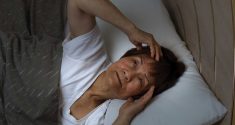More and more research is revealing that men and women are different in a variety of ways, aside from the obvious anatomical differences. According to several studies, the realm of sleep is no exception. Men and women have slight differences in their circadian rhythms that can have a huge impact on their daily routine. In addition, there are significant differences in which sleep disorders each gender is prone to suffer from. What exactly are the sleep differences between women and men? When it comes to sleep, there are five key areas where the sexes have different habits and risks.
1. Men and women have slightly different internal clocks.
Regardless of one’s sex, our circadian rhythms run in fundamentally the same ways. Different cells in our body sense time by a variety of factors such as light and activity levels. These cues are coordinated in the suprachiasmatic nucleus (SCN) of the hypothalamus, which then stimulates our bodies to release melatonin, cortisol and other hormones that control wakefulness and sleep. However, there are a few ways that the internal clocks of men and women are different in their basic timing.
First, the circadian clocks of women run on a time interval that is slightly less than 24 hours. This is likely due to the fact that women’s circadian cycles are slightly shorter — by around six minutes. This may not seem like a significant discrepancy, but it can add up to an immense fluctuation in sleep behavior. In addition, this may be the reason for another very important difference in our circadian rhythms: Women tend to fall asleep and wake up earlier. In general, women are more likely to be active in the morning than in the evening, which brings us to another important difference.
2. Women Need More Sleep Than Men
Researcher Dr. Jim Horne, Britain’s leading expert in sleep science, maintains that women need more sleep than men — an average of 20 minutes more, in fact. Because one of the main purposes of sleep is to allow the brain to recover and repair itself, the more of your brain you use during the day, the more recovery time — and thus sleep — you will need. According to Dr. Horne, “Women tend to multi-task — they do lots at once and are flexible — and so they use more of their actual brain than men do. Because of that, their sleep need is greater.”
3. Men are more likely to be night owls, while women are more likely to be early birds.
The differences in the timing of our internal clocks likely contributes to a basic phenomenon that many people have observed: Men tend to be more productive at night while women are more likely to be early risers. Women are also more likely to report feeling sleepy during the day. This can have an immense impact on how people manage their lives and their time. It can even interfere with family time and date activities. However, there are a few ways that this can be managed. Many women benefit from bright lighting late at night to delay sleep a bit longer, while men may need this light early in the morning.
This also may affect how people adjust to challenges such as jet lag, the change of the clocks and other challenges to our circadian rhythms. Women will likely adapt best to changes that lead to falling asleep and waking earlier, while men are likely to struggle with these. However, women seem to deal better with sleep deprivation and jet lag overall.
4. Men have a higher risk of developing different sleep disorders than women.

Men, on the other hand, have almost twice the rate of sleep apnea, a life-threatening disorder in which people stop breathing for short periods throughout the night. This is likely due to the basic anatomical fact that men are more likely to have fat deposits in and around their neck that can compromise breathing. Sleep apnea can often cause loud and disruptive snoring, a common complaint in sharing a bedroom with male partners. It can also lead to excessive fatigue during the day as well as an increased risk of cardiovascular issues. The good news is that apnea is often treatable, so there is no reason to move into separate bedrooms. Sleep disorders common in women, however, are not as easily treated due to another key difference between the sexes.
5. Men and women react differently to sleep medications.
The medications used most commonly for insomnia are known as hypnotic medications, which includes the popular drugs Ambien and Lunesta. However, research has found that these drugs do not work identically in men and women. Hypnotic medications are metabolized more slowly in women, which means that they cannot safely take as high of a dose. In fact, Ambien, also known as zolpidem, is given in doses up to 10 mg in men but only up to 5 mg in women. In addition to differences in the rate of metabolism, studies performed on rats have indicated that these drugs also have slightly different mechanisms of actions in men and women.
These four differences can add up to very different schedules and a very different set of sleep challenges. However, there is no need for the bedroom to become a battleground. Despite the differences in how and when we sleep, the most important thing is to ensure that you and your partner keep a regular schedule and get the rest that you need.







